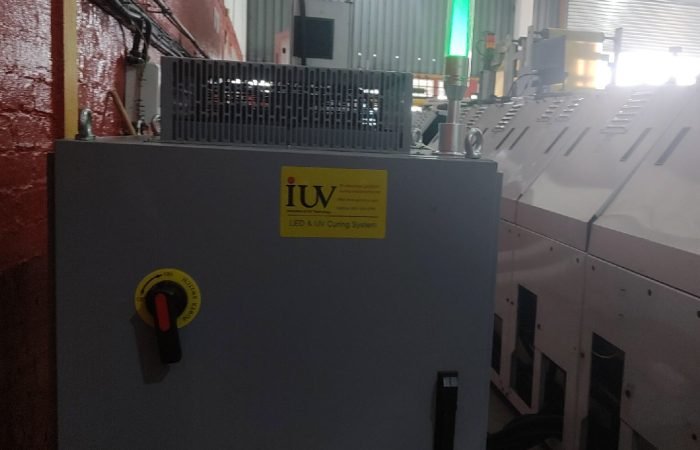Label printing demands precision, speed, and adaptability – three factors that directly impact production timelines and material costs. Traditional curing methods often create bottlenecks in these areas, particularly when working with heat-sensitive substrates or intricate designs. UV LED curing systems eliminate these friction points through targeted photopolymerization, enabling printers to achieve faster turnaround times without compromising quality.
The science behind UV LED curing revolves around precise wavelength emission (typically 365-405 nm) that activates photoinitiators in UV-curable inks and coatings. Unlike broad-spectrum mercury lamps, LED arrays emit narrow-band UV light optimized for rapid cross-linking of polymer chains. This spectral precision translates to instant curing – literally mid-air for some applications – allowing immediate handling of printed materials. For flexographic presses running alcohol-based inks, this technology reduces dot gain by 18-23% compared to thermal drying methods through controlled polymerization.
Narrow-web converters particularly benefit from UV LED integration. The compact nature of LED modules enables retrofitting into existing press configurations without major mechanical overhauls. A 10-color narrow-web press using LED curing can maintain web speeds exceeding 200 fpm while curing 3µm ink films completely, something impossible with conventional drying tunnels requiring excessive floor space. The directional nature of LED output also minimizes heat transfer to substrates, preventing PET liner distortion in pressure-sensitive label production.
Offset printers adopting UV LED systems report 40-60% reductions in make-ready waste. The instant on/off capability allows precise curing synchronization with print cylinder rotation, eliminating the warm-up delays associated with mercury vapor lamps. Sheetfed operators using UV coatings achieve scratch resistance in under 0.8 seconds – faster than the sheet transfer mechanism can cycle. This synchronization capability proves critical when printing metallic inks that require perfect surface leveling before curing.
Energy consumption patterns reveal another efficiency layer. A typical 30cm UV LED array draws 1.8kW compared to 8kW for equivalent mercury systems, with 85% of electrical input converted directly to usable UV energy versus 35% in traditional setups. This efficiency allows 24/7 operations without heat management infrastructure – a game-changer for urban print shops with space constraints. The absence of ozone generation removes ventilation requirements, further simplifying facility layouts.
Substrate compatibility expands significantly with UV LED technology. Cold-cure capability enables printing on thermally sensitive materials like thin-gauge polypropylene or PVC without warping. Screen printers using UV LED report successful curing of thick opaque whites on static-prone HDPE containers – a previously problematic combination with IR drying. The directional light projection also improves cure consistency on textured surfaces common in premium wine labels and embossed packaging.
Maintenance metrics tell their own story. With no consumables to replace and 20,000 hour lifespans, UV LED systems reduce downtime compared to mercury lamps requiring quarterly bulb changes and reflector cleaning. The solid-state design withstands vibration better than fragile quartz lamps, particularly beneficial for rotary presses and older equipment.
As label designs incorporate more tactile effects and functional coatings, UV LED’s ability to cure multiple chemistries in sequence becomes invaluable. A single press pass can now achieve raised textures with high-build varnishes followed by matte topcoats – each layer cured completely before the next application. This multi-stage curing capability supports the growing demand for premium decorative effects without secondary processing.
The operational flexibility extends to color management. UV inks cured through LED systems maintain wider gamut stability compared to solvent-based alternatives affected by evaporation rates. Pantone matches stay consistent across long runs since curing parameters remain stable, unlike thermal systems where drying temperature fluctuations alter ink film characteristics.
For converters handling variable data printing, UV LED’s immediate curing prevents ink smearing during high-speed digital imprinting. The technology’s compatibility with water-based UV hybrid inks also addresses growing sustainability requirements without sacrificing cure speed.
Implementation strategies should focus on spectral matching – aligning LED peak wavelengths with photoinitiator absorption profiles in specific ink formulations. Successful integration requires collaboration between press engineers, ink chemists, and UV system providers to optimize irradiance levels and exposure durations.
Future developments in UV LED technology promise even greater efficiency gains. Emerging multi-wave LED systems can simultaneously activate different photoinitiators, enabling faster cure of complex ink formulations. Advances in heat sink design are pushing power densities beyond 15W/cm² while maintaining component longevity.
For label printers facing margin pressures and tight deadlines, UV LED curing isn’t just an upgrade – it’s becoming operational necessity. The technology’s ability to resolve competing demands for speed, quality, and material flexibility positions it as foundational infrastructure in modern label manufacturing workflows.












